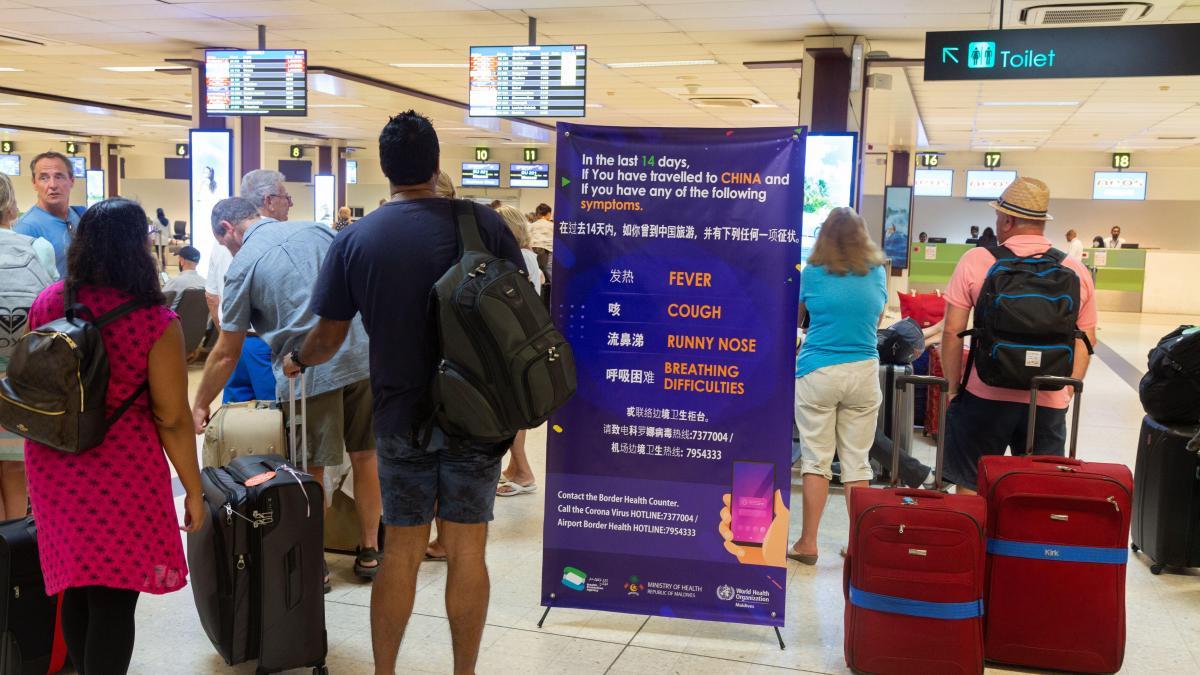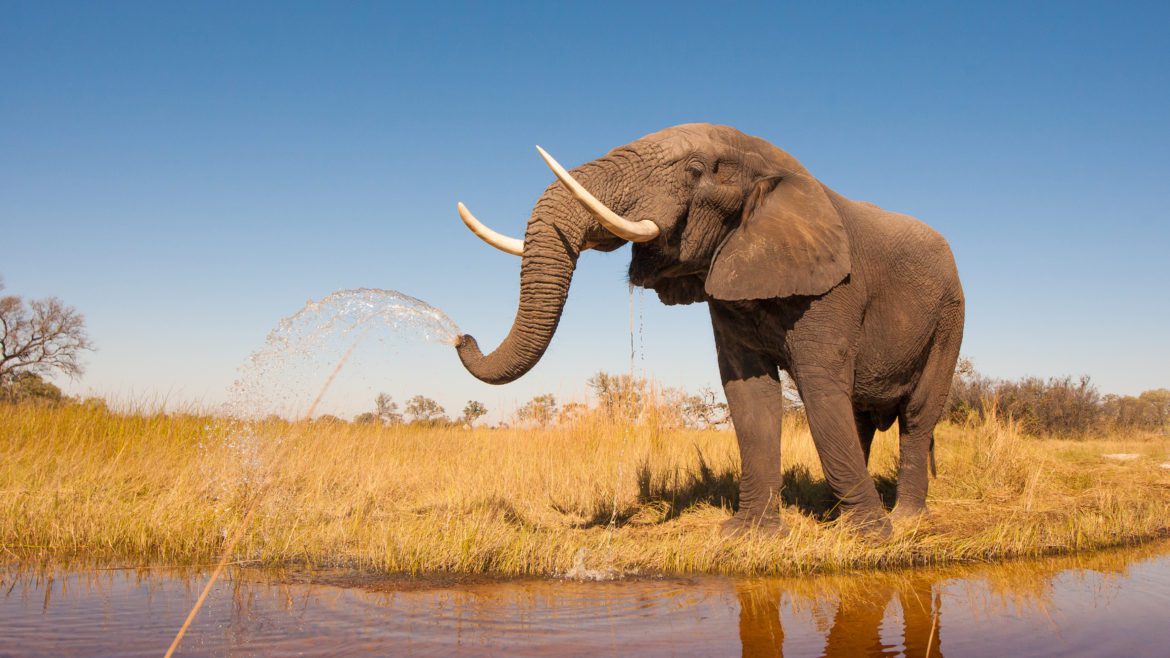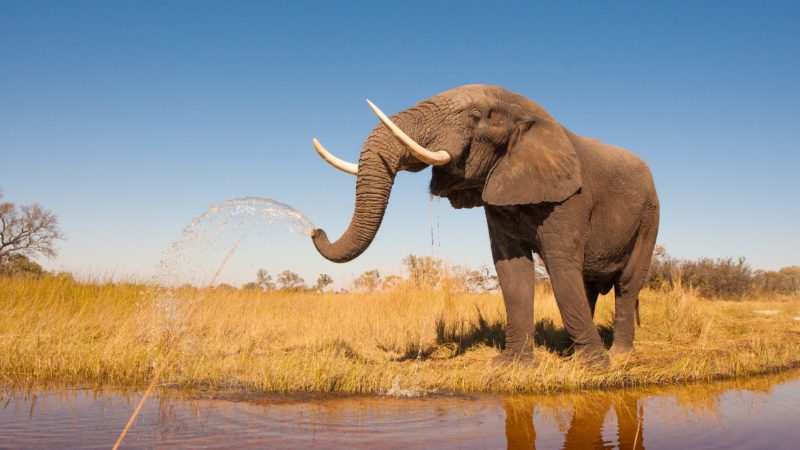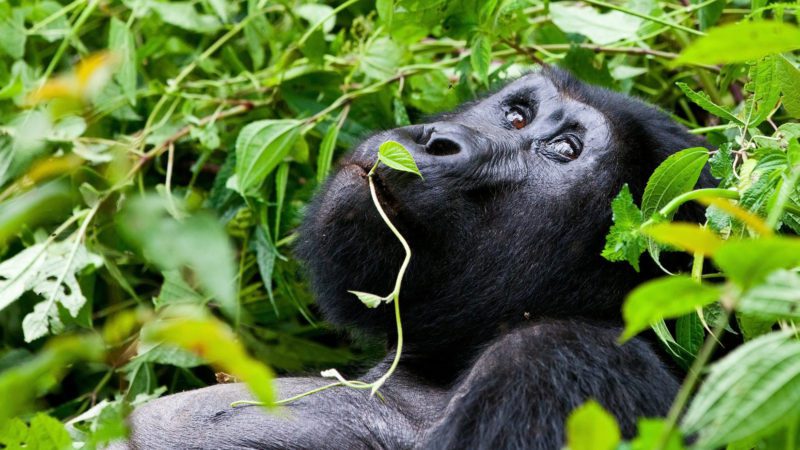Are travel bans effective?

Travel bans upend economies, communities and health care systems, but there is little evidence to suggest that they prevent the spread of disease. Photo: Alamy.
Countries including the US are taking dramatic steps to contain the spread of the novel coronavirus, with some barring entry to anyone who has recently visited China.
But do travel bans work?
DEOHS Lecturer Nicole Errett
Very little research exists, and the evidence available suggests any benefit may be temporary, according to a new study led by Nicole Errett, lecturer in the University of Washington Department of Environmental & Occupational Health Sciences, and colleagues at Johns Hopkins University.
The research was published in January in the Journal of Emergency Management.
We asked Errett to explain why international travel bans may do more harm than good and what countries should do instead.
You reviewed more than 2,000 research articles and found just six studies that explored the use of international travel bans to control the spread of emerging infectious diseases. What did you learn?
We looked at four infectious diseases that have emerged in recent years—the Ebola virus, SARS (Severe Acute Respiratory Syndrome), MERS (Middle East Respiratory Syndrome) and the Zika virus (we did not include other infectious diseases, such as influenza).
We found only a handful of modeling studies on Ebola and SARS, and nothing that evaluated the impact of an actual ban after it was implemented.
Some of the evidence suggests that a travel ban may delay the arrival of an infectious disease in a country by days or weeks. However, there is very little evidence to suggest that a travel ban eliminates the risk of the disease crossing borders in the long term.
Our ability to draw conclusions across the different studies we reviewed was limited by the small number of relevant studies. We urgently need more research in this area to understand whether travel bans and other control measures are truly effective.
Countries including the United States, New Zealand and the Philippines have imposed travel bans in response to the emergence of the new coronavirus in China. What’s the harm in using travel bans to combat infectious diseases?
The economic and social impacts on countries are profound, and we’re already seeing the effects.
China’s economy is taking a huge hit, with a ripple effect felt around the world. Airports and borders are closed, supply chains are interrupted, businesses are shuttered.
Health and health systems are also affected, as it becomes difficult to transport health care workers and resources where they are needed, and people avoid or can’t access routine health care services.
The stigma associated with travel bans sparks xenophobia and racism, and we’re already seeing that play out in the US and other countries.
Why has so little research been done on travel bans?
Assessing the impact of a real-world travel ban is challenging.
Travel bans are often implemented alongside other travel restrictions and control measures. It’s really hard to tease apart the impacts of travel bans versus other outbreak response measures.
The studies we found are all based on models and simulations, and most focused only on air travel without considering land or sea crossings.
The models rely on assumptions, and they don’t fully account for things like human behavior. For example, people may voluntarily reduce their travel or change their modes and routes of transportation.
The studies we found modeled the impacts of travel bans on Ebola and SARS, specifically. Every disease has unique characteristics, including the modes and rate of transmission and how sick people get once they’re infected.
Social and environmental circumstances also influence how a disease is transmitted. Together, all of these factors have an impact on how or if control measures work. This makes it difficult to apply the conclusions from any given study to the novel coronavirus.
In response to the coronavirus outbreak, the US Centers for Disease Control and Prevention activated its emergency operations center to coordinate with public health partners worldwide. Photo: CDC/James Gathany.
What should countries do instead?
We should focus on the things we know are effective—vaccine development, domestic travel screening, patient monitoring, clear risk communication and investing in public health systems that work and are ready to respond to emergencies.
Following the Ebola crisis, the US and many countries focused on strengthening their health systems so that all types of hospitals were more prepared to respond in an emergency.
In the case of the coronavirus, an effective global response should start with bolstering China’s own response to the epidemic within its borders and preparing health systems around the world to deal with a potential outbreak.
What can we learn now in the face of the coronavirus to strengthen our response in the future?
Until more evidence is available, policymakers should use extreme caution in applying travel bans as a policy solution to control the spread of disease.
Those of us involved in disaster preparedness research and policy need to start thinking now about how to measure the effectiveness of emergency response measures such as travel bans to inform future response efforts. We need protocols in place beforehand so that we can gather and share data in a consistent way.
It’s not an “if” for the next event. It’s a matter of when. That’s a certainty.
And each event is an opportunity to improve our capability to respond to the next one. I think we will learn things from the coronavirus epidemic that can better prepare us for the future.
The study was co-authored by Lauren Sauer, Department of Emergency Medicine, Johns Hopkins School of Medicine; and Lainie Rutkow, Department of Health Policy and Management, Johns Hopkins University.
7 times a travel ban changed the world for good

Travel ban. The phrase has brought no shortage of negative connotations in recent months. Now that it’s back in the news after the U.S. government’s latest executive order, it seems the impacts will stick around a while longer.
The policy has provoked far-reaching consequences for, well, much of the world. It’s clear that closing borders, separating families, and discriminating against those of a different religion results in untold upset and confusion. It also impacts the travel industry. New York City has predicted the first drop in international visitor numbers since 2008, according to Bloomberg. Meanwhile, travel booking sites like Kayak and Hopper have reported dramatic decreases in those searching for flights to the U.S. Not only does this threaten billions of dollars and thousands of jobs, but it sets an extremely divisive precedent for the presidency.
With ample negativity circulating online about it all, we’re here to highlight some of the good. All over the world there are incredible people, organizations and governments showcasing the power of a ban — when it’s used for good instead of evil. In recent history, implementing a ban has proven that it can, and should, be a means of creating very real, positive change. Here are seven examples of travel bans that brought positive change to our industry.
When China banned ivory sales
The dramatic decline in the elephant population over the past 50 years can be greatly attributed to the ivory trade. Even with the global ban in 1989 by CITES (Convention on International Trade in Endangered Species), elephants continued to be killed for their tusks (in 2015 about 20,000 elephants were killed).
A major destination for the ivory market, sourcing nearly 70% of global demand, China finally said enough was enough. At the start of the year, the Chinese government took a major stand against ivory trade by announcing a complete shut-down by the end of 2017. This was a result of the government’s 2015 promise to end its ivory market trade , followed by its 2016 commitment reaffirmed during the 2016 U.S.-China Strategic and Economic (S&ED).
The CEO of WWF-China applauded the Chinese government’s decision. There is still a lot of work that needs to be done, but this important stand against elephant cruelty is a step in the right direction.
When Botswana banned elephant rides

When an entire nation makes a promise to ban elephant rides, the world should rejoice. Especially when that nation is Botswana, which has the largest elephant population in all of Africa — and in December 2016 announced a countrywide ban of elephant rides.
The first commercial elephant rides in Africa started in Zimbabwe in the 1990s and the popularity spread throughout Southern Africa to meet the tourism demand. It’s the same story as anywhere else, with tourists not understanding the physical and psychological effects of the seemingly “fun and adventurous” attraction.
Thanks to a new government policy created by their Minister of Environment TK Khama, this elephant welfare initiative was brought to life. Seeing a cause backed by political support in Botswana makes it possible for other nations to make the collective effort to protect elephants.
When Amsterdam banned fur shopping
Fur was the ultimate status symbol for women in the 1940s and 1950s. Thankfully, some designers in the fashion industry today are making positive strides, with a greater focus on sustainable practices and a departure from exotic materials that endanger animals. Even legendary designer, Giorgio Armani, announced the end of fur in his line last fall.
In the summer of 2016, 19 store owners united on the Hartenstraat in Amsterdam to ban fur from their shops. Positioned in the historic city center, this popular tourist destination became the first fur-free shopping street in Europe after working together with Bont voor Dieren, a Dutch animal protection organization.
Recently in Berkeley, California a petition gathered 1,900 online supporters to become the first city in the Bay Area to ban fur sales. Little by little, we have seen this happen with designers and shops, and the movement is catching on in tourist-heavy cities. This effort will change travel shopping destinations, helping protect animals by avoiding frivolous fashion trends in favor of the classier cruelty-free look.
When TripAdvisor banned animal attractions

Animal attractions are a complex issue. Cruelty is glaringly obvious in a bullfight, but for over 20 years, elephant rides were seen simply as family attractions. In fall 2016 TripAdvisor made a stand by calling it quits with selling tickets to animal attractions. The only exceptions allowed were ones which provided educational and conservation value, like aquariums and zoos. TripAdvisor’s CMO Barbara Messing admitted that there is no universal standard when it comes to animal attractions in the tourism industry, and they have made a commendable effort by partnering with animal rights organizations to set a higher standard.
By banning the tickets to animal attractions, TripAdvisor is instead putting the focus on education – to encourage travelers to do the research and make educated decisions before engaging in wildlife tourism. This is an important move by a giant in the tourism industry, and will significantly decrease the revenue generation that drives a continuation of animal attractions worldwide.
When the circus banned elephant shows
What kid didn’t delight in going to the circus? Unfortunately, what seemed like a magical ring under a tent was actually a long-standing controversy. In 2011 Ringling was fined with the largest settlement of its kind in U.S. history for violations of the Animal Welfare Act (AWA), dating back to 2007. That’s why it wasn’t surprising when two years ago Ringling Bros. announced the end of a long-standing and popular tradition…elephant shows.
Groups like PETA had been working on Ringling Bros. for years, demanding their release due to poor conditions and abuse. This campaign not only opened the eyes of consumers — which affected ticket sales — it also sparked anti-circus laws in U.S. cities that prevented circuses from touring without legal ramifications.
As of last year, 17 countries have banned wild-animal circuses entirely. While we are happy to see the Ringling elephants moved to a conservation, this worldwide ban shows the circus’ days are numbered as more people rise against the archaic tradition of animals being used for entertainment.
When travel companies banned elephant rides
In 2014, Intrepid Travel became the first global tour operator to ban elephant rides. Since that day, over 100 travel companies have followed suit. When it comes to animal welfare, Intrepid vocalizes their views loud and clear.
Elephants are wild animals. Period. An elephant under human command is not being domesticated…it’s being imprisoned. While there are admirable elephant rescue operations in existence, sadly an increase in poaching elephants from the wild for the sake of tourism tells a very different story.
This evidence of cruelty prompted Intrepid to phase out elephant rides over the course of two years, until all trips were elephant-free. Recently over 160 travel companies signed World Animal Protection’s elephant-friendly pledge to ban elephant rides and shows. It’s encouraging to see other major players in the travel industry pulling together to save the elephants. Power in numbers is a real thing.
When the U.S. banned import of lion hunt trophies

A century ago the lion population looked very different in South Africa, an estimated 200,000 drastically down to 20,000. Trophy hunting has been pinpointed as a main cause for this decline by animal conservationists, with the majority of lion trophies being imported into the U.S. from canned hunts and hunting tourism.
To increase the hunter’s chances of obtaining a lion trophy to bring home, a canned hunt confines the animal to a fenced-in area. Between the confinement and murder for sport, it was high time for these attractions to come to an end, and for these hunting enthusiasts to face the facts of their willing participation in a dangerous and detrimental industry.
In Fall 2016, the U.S. Fish and Wildlife Service announced a highly-anticipated ban on the import of lion hunt trophies from these canned hunts in South Africa. By no longer allowing the import, the sport loses its appeal, with hunters being unable to bring home their cruel souvenirs. This is a major step in the right direction to end the decline of the lion population.
Image credits: c/o Intrepid Travel
Feeling inspired to book a trip with a difference? Check out Intrepid’s commitment to responsible travel.
Are travel bans effective?

Travel bans upend economies, communities and health care systems, but there is little evidence to suggest that they prevent the spread of disease. Photo: Alamy.
Countries including the US are taking dramatic steps to contain the spread of the novel coronavirus, with some barring entry to anyone who has recently visited China.
But do travel bans work?
DEOHS Lecturer Nicole Errett
Very little research exists, and the evidence available suggests any benefit may be temporary, according to a new study led by Nicole Errett, lecturer in the University of Washington Department of Environmental & Occupational Health Sciences, and colleagues at Johns Hopkins University.
The research was published in January in the Journal of Emergency Management.
We asked Errett to explain why international travel bans may do more harm than good and what countries should do instead.
You reviewed more than 2,000 research articles and found just six studies that explored the use of international travel bans to control the spread of emerging infectious diseases. What did you learn?
We looked at four infectious diseases that have emerged in recent years—the Ebola virus, SARS (Severe Acute Respiratory Syndrome), MERS (Middle East Respiratory Syndrome) and the Zika virus (we did not include other infectious diseases, such as influenza).
We found only a handful of modeling studies on Ebola and SARS, and nothing that evaluated the impact of an actual ban after it was implemented.
Some of the evidence suggests that a travel ban may delay the arrival of an infectious disease in a country by days or weeks. However, there is very little evidence to suggest that a travel ban eliminates the risk of the disease crossing borders in the long term.
Our ability to draw conclusions across the different studies we reviewed was limited by the small number of relevant studies. We urgently need more research in this area to understand whether travel bans and other control measures are truly effective.
Countries including the United States, New Zealand and the Philippines have imposed travel bans in response to the emergence of the new coronavirus in China. What’s the harm in using travel bans to combat infectious diseases?
The economic and social impacts on countries are profound, and we’re already seeing the effects.
China’s economy is taking a huge hit, with a ripple effect felt around the world. Airports and borders are closed, supply chains are interrupted, businesses are shuttered.
Health and health systems are also affected, as it becomes difficult to transport health care workers and resources where they are needed, and people avoid or can’t access routine health care services.
The stigma associated with travel bans sparks xenophobia and racism, and we’re already seeing that play out in the US and other countries.
Why has so little research been done on travel bans?
Assessing the impact of a real-world travel ban is challenging.
Travel bans are often implemented alongside other travel restrictions and control measures. It’s really hard to tease apart the impacts of travel bans versus other outbreak response measures.
The studies we found are all based on models and simulations, and most focused only on air travel without considering land or sea crossings.
The models rely on assumptions, and they don’t fully account for things like human behavior. For example, people may voluntarily reduce their travel or change their modes and routes of transportation.
The studies we found modeled the impacts of travel bans on Ebola and SARS, specifically. Every disease has unique characteristics, including the modes and rate of transmission and how sick people get once they’re infected.
Social and environmental circumstances also influence how a disease is transmitted. Together, all of these factors have an impact on how or if control measures work. This makes it difficult to apply the conclusions from any given study to the novel coronavirus.
In response to the coronavirus outbreak, the US Centers for Disease Control and Prevention activated its emergency operations center to coordinate with public health partners worldwide. Photo: CDC/James Gathany.
What should countries do instead?
We should focus on the things we know are effective—vaccine development, domestic travel screening, patient monitoring, clear risk communication and investing in public health systems that work and are ready to respond to emergencies.
Following the Ebola crisis, the US and many countries focused on strengthening their health systems so that all types of hospitals were more prepared to respond in an emergency.
In the case of the coronavirus, an effective global response should start with bolstering China’s own response to the epidemic within its borders and preparing health systems around the world to deal with a potential outbreak.
What can we learn now in the face of the coronavirus to strengthen our response in the future?
Until more evidence is available, policymakers should use extreme caution in applying travel bans as a policy solution to control the spread of disease.
Those of us involved in disaster preparedness research and policy need to start thinking now about how to measure the effectiveness of emergency response measures such as travel bans to inform future response efforts. We need protocols in place beforehand so that we can gather and share data in a consistent way.
It’s not an “if” for the next event. It’s a matter of when. That’s a certainty.
And each event is an opportunity to improve our capability to respond to the next one. I think we will learn things from the coronavirus epidemic that can better prepare us for the future.
The study was co-authored by Lauren Sauer, Department of Emergency Medicine, Johns Hopkins School of Medicine; and Lainie Rutkow, Department of Health Policy and Management, Johns Hopkins University.
Source https://deohs.washington.edu/edge/blog/are-travel-bans-effective
Source https://www.intrepidtravel.com/adventures/travel-ban-positive-impact/
Source https://deohs.washington.edu/edge/blog/are-travel-bans-effective